
The_State_of_Fashion_2018_v2_watermark
.pdf
vk.com/id446425943 2018
The State
of Fashion

vk.com/id446425943
Copyright The Business of Fashion and McKinsey & Company © 2017

vk.com/id446425943The State of Fashion 2018The State of Fashion 2018
An emerging sense of optimism by Craig & Karl
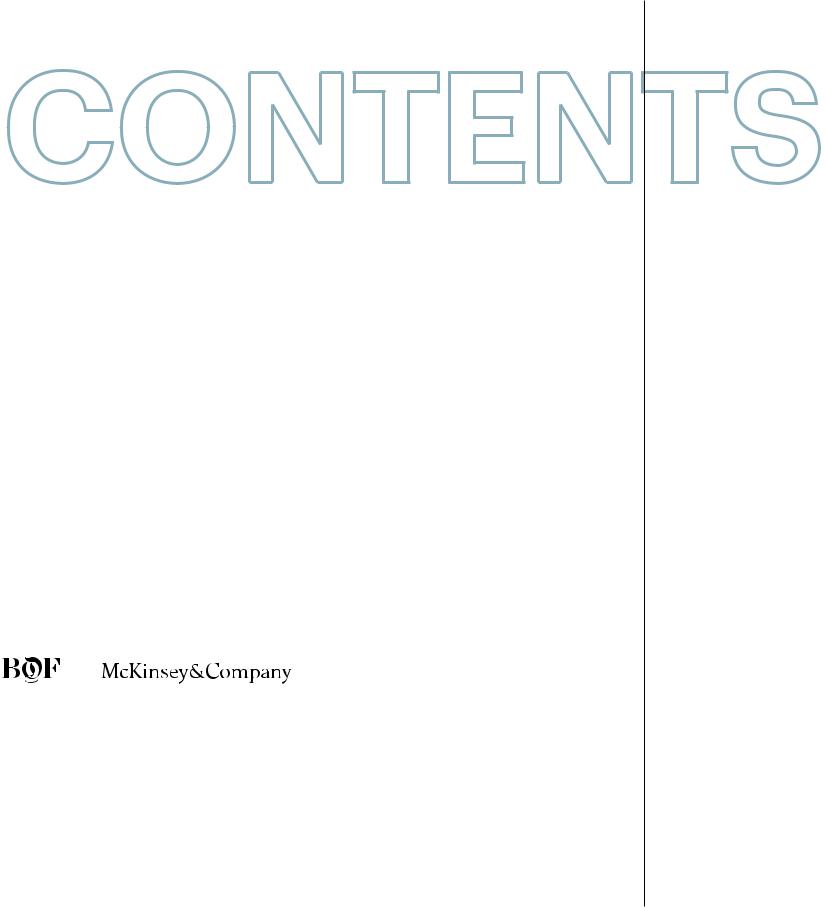
vk.com/id446425943
The State of Fashion 2018 was created to provide a comprehensive view of the fashion industry. Its principal aim remains to lay out the interconnectedness of the entire fashion ecosystem across regions, market segments and product categories by distilling the industry’s current and projected performance, and addressing the factors shaping and driving fashion today and in the year to come.
To accomplish this, the report relies on extensive qualitative and quantitative analyses, drawing on industry and proprietary sources, including executive interviews, the BoF-McKinsey Global Fashion Survey, and the McKinsey Global Fashion Index, which tracks industry sales, operating profit and economic profit (value creation).
The report is split into two sections: Section 1 provides an overview of some of the massive long-term changes in the fashion industry that serve as a backdrop for everything that is happening. These are overarching, interconnected forces that will drive and shape the trends in years to come. Section 2 provides an outlook for 2018, forecasting the expected growth for the fashion industry across regions, market segments and product categories, highlighting the top priorities for executives, and defining the ten trends that we believe will set the agenda for the industry over the next 12 months.
In order to present a full picture of the ecosystem and bring to life the complex and multifaceted aspects of the industry, the report also includes a series of deep dives and executive interviews on some of the most exciting developments, including the the impact of artificial intelligence on ecommerce platforms and a once in a generation tipping point that could change the balance of power in the global fashion industry.
The State of Fashion 2018
FOREWORD |
6 |
EXECUTIVE SUMMARY |
10 |
FORCES SHAPING FASHION |
14 |
INDUSTRY OUTLOOK 2018 |
20 |
McKINSEY GLOBAL FASHION INDEX |
74 |
GLOSSARY & END NOTES |
80 |
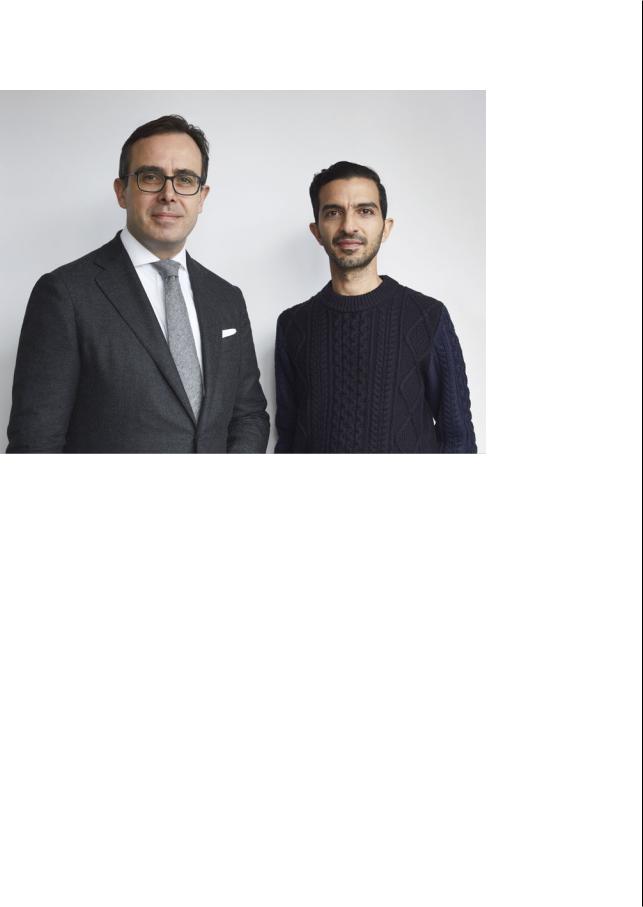
vk.com/id446425943
FOREWORD
O |
|
|
ne year ago, McKinsey & Company and The Business |
|
|
of Fashion (BoF) set out to transform the level of deba- |
|
|
te about fashion by providing a foundation for rigorous |
|
|
in-depth research and analysis of the global fashion in- |
|
|
dustry, focusing on the themes, issues and opportunities |
|
|
driving the sector and its performance. |
|
|
Now, we are publishing our second annual report. Over the last |
|
|
months we have again put together an unrivalled global network of |
|
|
experts, research and analysis to bring you a report that makes sen- |
|
|
se of fashion’s myriad segments, categories and geographies. Our aim |
|
|
remains threefold: first, to establish a common understanding of the |
|
|
forces that are shaping the industry; second, to provide clarity and |
|
|
transparency on the industry’s performance; and third, to set the agen- |
|
|
da for the topics that should be top of mind for business and creative |
|
|
leaders in 2018. By bringing together our two organisations, we have |
|
|
pooled resources to draw on BoF’s deep industry expertise and insider |
|
|
access alongside McKinsey’s functional, analytical and industry insight |
Lohr |
|
to offer a rare blend of quantitative rigour and sharp-eyed qualitative |
||
Thomas |
||
insights about the fashion sector. This year we surveyed more than 200 |
||
6 |
|
The State of Fashion 2018
senior industry executives around the world and conducted in-depth interviews with some of the most influential and forward-thinking people in the industry. If you’re engaged in the business of fashion – in the boardroom, as an entrepreneur building a start-up, or even as an informed shopper on the high street – this report will tell you what you need to know about the business trends shaping our industry’s future.
Thisreportincludesthesecondreadoutofourindustrybenchmark: the McKinsey Global Fashion Index (MGFI). With a database of nearly 500 fashion companies, this index will allow for analysis and comparison of how a fashion company is performing against others in its market segment and product category, and this year we have also added a regional view. Already, the data set has grown and is becoming evermore valuable as a source of insight into both the pressures on fashion and the opportunities emerging from the world’s increasingly turbulent fashion markets.
Last year we made predictions about how the fashion world would pan out in 2017. In this report we make a new set of predictions for the year ahead. We believe that 2018 will be a watershed year in fashion. It is the year when Asia comes into its own: for the first time, more than half of apparel and footwear sales will originate outside of Europe and North America, and the beneficiaries will be emerging market countries across not only Asia-Pacific but also Latin America and other regions.
It is also the year when the industry will face unprecedented disruption – from ever-more-demanding customers, from the polarisation into high-end and value segments, from continuing changes to the fashion system.
It is a year that, more than ever, will have clear winners – and clear losers. The difference between the two will be their level of boldness, ambition, and courage. So ask yourself – what is yours?
IMRAN AMED and ACHIM BERG
7
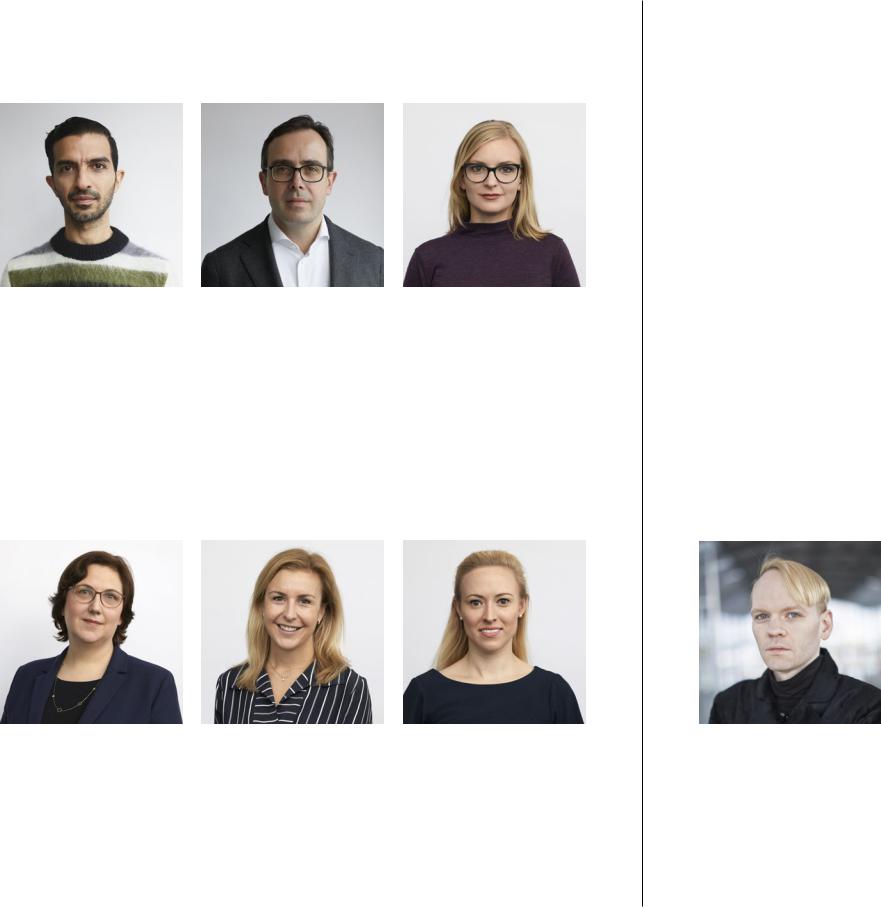
vk.com/id446425943
CONTRIBUTORS
IMRAN AMED |
|
ACHIM BERG |
|
SARA KAPPELMARK |
|
|
|
|
|
|
|
|
|
|
As founder, editor-in-chief and CEO of The Business of Fashion, Imran Amed is one of the fashion industry’s leading writers, thinkers and commentators. Fascinated by the industry’s potent blend of creativity and business, he began BoF as a blog in 2007, which has since grown into the pre-eminent global fashion industry resource serving a three- million-strong community from over 200 countries and territories. Previously, he was a consultant at McKinsey in London.
Based in Frankfurt, Achim Berg leads McKinsey’s Global Apparel, Fashion & Luxury Practice and is active in all relevant sectors including clothing, textiles, footwear, athletic wear, accessories and retailers spanning from the value end to luxury. As a global fashion industry and retail expert, he supports clients on a broad range of strategic and top management topics, as well as on operations and sourcing-related issues.
Sara is a Partner at McKinsey, and co-leads McKinsey’s Scandinavian Apparel, Fashion and Luxury goods hub. She works with apparel and design companies across segments and development phases (from startups to established global companies) supporting them on topics like strategy and growth, omnichannel transformation and organisational change.
SASKIA HEDRICH |
|
JOHANNA ANDERSSON |
|
MARTINE DRAGESET |
|
|
|
|
|
|
|
|
|
|
As well as working with apparel clients globally on strategy, sourcing optimisation, merchandising transformation and CSR, Saskia Hedrich supports countries in Africa, Asia, and Latin America to develop strategies for their national garment industries. As a senior expert, Saskia is a regular speaker and author of industry publications.
8
Johanna Andersson co-leads the Scandinavian Apparel, Fashion and Luxury goods hub and has supported companies in the sector ranging from luxury to value around the globe. Johanna focuses on strategy, growth and digital/omnichannel related topics.
During her time at McKinsey Martine Drageset has worked with apparel and sportswear companies in Scandinavia, on a wide range of topics including strategy, operating model, organisation and marketing & sales.
The State of Fashion 2018
ROBB YOUNG
As global markets editor of The Business of Fashion, Robb Young oversees content from Asia-Pacific, the Middle East, Latin America, Africa, the CIS and Eastern Europe. He is an expert on emerging and frontier markets, whose career as a fashion editor, business journalist, author and strategic consultant has seen him lead industry projects around the world.
ACKNOWLEDGEMENTS
The authors would like to thank all the members of the Business of Fashion and McKinsey community for their contribution to research and participation in our Global Fashion Survey. In particular we would like to thank: Brian Cornell, Richard Liu, David Schneider, Chip Bergh, Tory Burch, Sebastian Badault, Victor Luis, Laurent Potdevin, Dame Ellen MacArthur, Ali Horowitz, John Hooks, Jack Calhoun and Colin Henry.
The authors also give thanks to Kate Smaje, Aimee Kim, Jennifer Schmidt, Brian Gregg, Audrey Manacek, Heloisa Callegaro, Raffaele Breschi, Damian Hattingh, Lan Luan, Daniel Zipser, Ankur Modi, Jean-Baptiste Coumau, Alex Sukharevsky, Antonio Gonzalo, Nathalie Remy, Silvana Müller, Adriana Clemens, Tiffany Wendler, Johnattan Leon, Jungeun Han, Felix Rölkens, Julie Tang, David Honigmann, Tom Skiles, Martin McQuade and Neha Nangia Ojha of McKinsey, Julia Heskel for editor support and the entire team from The Business of Fashion who have played an instrumental role in creating this report – in particular, Anouk Vlahovic, Kati Chitrakorn, Lauren Sherman, Emma Clark, Jennifer Pasiakos, Vikram Alexei Kansara, Gemma A. Williams, Andres Pajon-Leite, Tamison O'Connor and Victoria Berezhna.
In addition, the authors would like to thank Jan-Nico Meyer for the art direction, Craig & Karl for our cover illustration and Cub Studio and Getty Images for supplying imagery to bring our findings to life.
9

vkIn.com/id4464259432018, an important
tipping point will be reached when, for the first time, more than half of apparel and footwear sales will originate outside of Europe and North America,
as the main sources
of growth are emerging market countries across Asia-Pacific, Latin America and other regions.
EXECUTIVE SUMMARYThe State of Fashion 2018
Anticipating a new sense of optimism
The fashion industry is turning a corner. Looking towards 2018, there is a new sense of optimism in an industry plagued by uncertainty. And while “uncertain” and “challenging” remain the most common words that executives in the BoF-McK- insey Global Fashion Survey have used to describe the state of the industry this year, right behind them in third place is “optimism.”
The McKinsey Global Fashion Index forecasts industry sales growth to nearly triple between 2016 and 2018, from 1.5 percent to between 3.5 to 4.5 percent. But the rebound is not being felt evenly across the globe. In fact, 2017 signals the end of an era. The West will no longer be the global stronghold for fashion sales. In 2018, an important tipping point will be reached when, for the first time, more than half of apparel and footwear sales will originate outside of Europe and North America, as the main sources of growth are emerging market countries across Asia-Pacific, Latin America and other regions. Not surprisingly, this is also reflected in fashion executives’ sentiments, as respondents from emerging markets are more optimistic about the industry’s outlook in 2018.
This outlook varies across value segments too. The ongoing polarisation of the industry with consumers trading up or down from mid-market price points continues to create headwinds for mid-priced fashion players while those operating in the luxury, value and discount segments further pick up speed. What is new is that the absolute luxury segment is accelerating alongside affordable luxury.
These developments take place at the same time as the fashion industry is undergoing other transformative shifts. Alongside consumers’ adoption of digital are raised expectations of customer experience and a higher scrutiny on convenience, price, quality, newness and a personal touch. Leading players are therefore creating innovative business models, using granular customer insights as a source of differentiation and pushing the limits of their end-to-end product development process. The performance gap between frontrunners and laggards continues to widen: from 2005 to 2015 the top 20 percent of fashion companies contributed 100 percent of the economic profit, while in 2016 the top 20 percent contribution had increased to 144 percent.
The challenges of operating in a fundamentally changing industry and an unpredictable macroeconomic environment has led fashion players to “toughen up.” Industry players are coming to accept unpredictability as the new normal, and fashion executives will respond by focusing their energy on improving what is within their control. We expect to see several themes emerge as defining features of 2018, from Asian fashion players asserting their power on the global stage to personalisation at scale and cutting-edge deployment of artificial intelligence. For those leaning forward and willing to help design the new features of the modern fashion system, the opportunities at hand to truly connect with fashion consumers across the globe have never been greater.
11
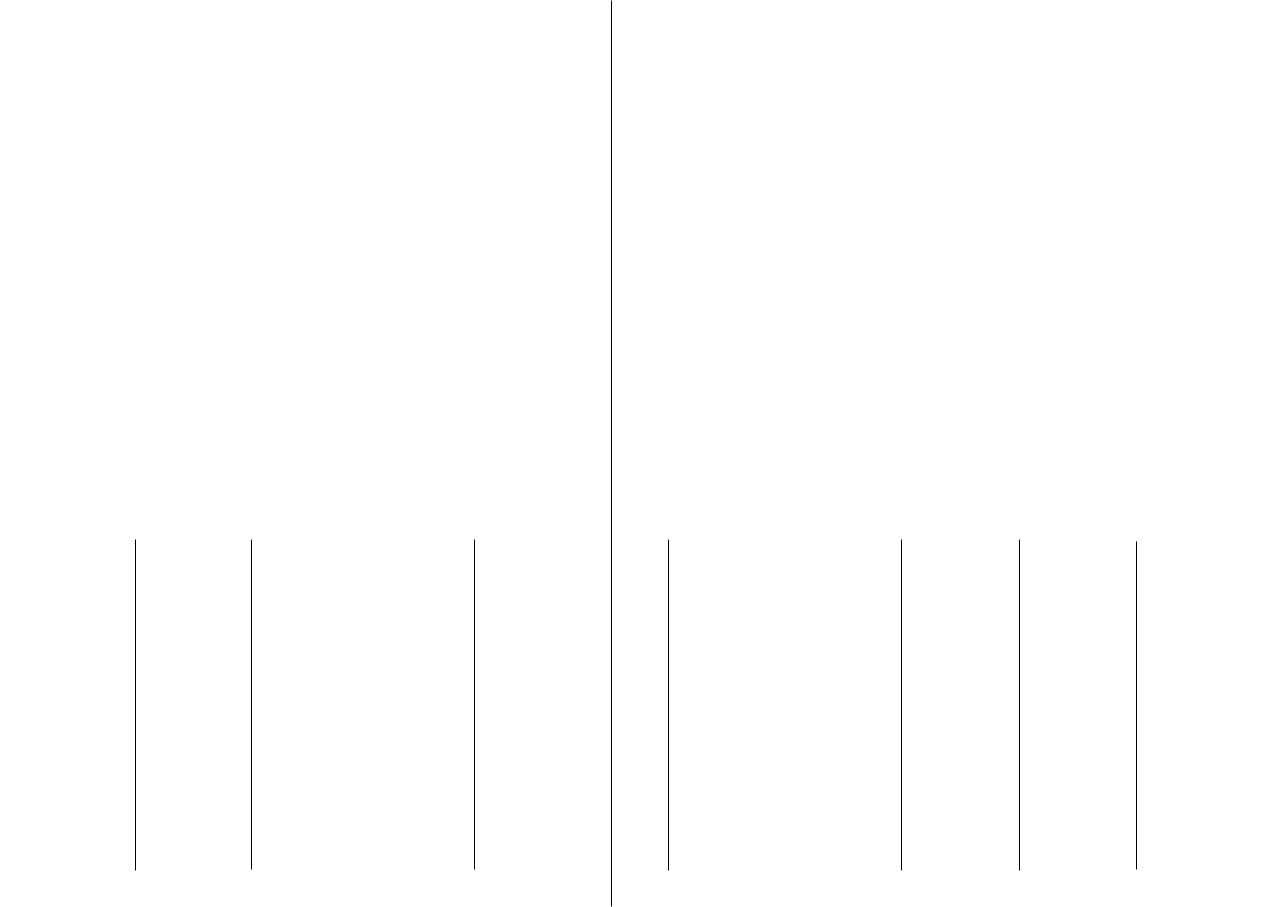
The State of Fashion 2018
vkTHE.com/id446425943 STATE OF FASHION 2018
DISRUPTIONS |
GLOBAL ECONOMY |
CONSUMER SHIFTS |
THE FASHION SYSTEM |
|||||||
– Volatility and uncertainty |
|
– Connected and in control |
|
– Digitisation across the value chain, |
|
|
||||
|
– Global interconnectedness |
|
– Seamlessly move |
|
with redefined cost structure |
|
|
|||
|
|
|
– Accelerated industry pace: Leaders push |
|
||||||
|
and competition |
|
|
omnichannel during |
|
|
||||
|
– Growth shift from West to |
|
shopping journey |
|
the limits of time from design to shelf |
|
||||
|
|
– Expecting zero friction |
|
– Brands experimenting with direct-to-consumer |
|
|||||
|
South and East |
|
|
|
|
|||||
|
– Disruptive technologies with |
|
– Sharing peer-to-peer: |
|
– New innovative business models |
|
|
|||
|
accelerated adoption |
|
information, reviews, |
|
– Brick-and-mortar traffic in decline – |
|
||||
|
– Urbanisation |
|
|
opinions |
|
|
|
|||
|
|
|
– Expecting it all: |
|
|
reinventing the store |
|
|
||
|
|
|
|
|
|
– Proliferation of data, providing business |
|
|||
|
|
|
|
convenience, quality, |
|
|
||||
|
|
|
|
values orientation, |
|
opportunities and challenges in control |
|
|||
|
|
|
|
newness and price |
|
and security |
|
|
|
|
|
Predictably |
Globalisation |
Asian |
Getting |
Platforms |
Mobile |
AI |
Sustainability |
Off-price |
Startup |
|
unpredictable |
reboot |
trailblazers |
personal |
first |
obsessed |
gets real |
credibility |
deception |
thinking |
TRENDS |
01. |
02. |
03. |
04. |
05. |
06. |
07. |
08. |
09. |
10. |
Geopolitical |
Despite the |
Asian players |
Personali- |
The question |
As consumers’ |
Leading |
Sustainability |
Off-price |
Due to an |
|
turmoil, |
rise of |
will assert |
sation and |
for fashion |
obsession with |
innovators |
will evolve |
sector growth |
urgent and |
|
economic |
nationalism, |
their power |
curation will |
brands is no |
mobile grows, |
will reveal the |
to be an in- |
continues to |
intense need |
|
uncertainty |
isolationist |
and leader- |
become more |
longer “if” |
the end-to-end |
possibilities |
tegral part of |
be driven by |
for innovation |
|
and unpredict- |
rhetoric and |
ship even |
important to |
but “how” to |
transaction will |
of artificial |
the planning |
the notion |
across the |
|
ability are the |
reshoring, |
more through |
the customer. |
collaborate |
also move to |
intelligence |
system where |
that it provides |
industry, |
|
new normal. |
globalisation |
pioneering |
|
with big |
mobile. |
across all |
circular econ- |
a solution to |
a growing |
|
|
will not stall. |
innovations |
|
online |
|
parts of the |
omy principles |
challenges |
number of |
|
|
|
and global- |
|
platforms. |
|
fashion value |
are embedded |
like excess |
fashion com- |
|
|
|
scale invest- |
|
|
|
chain. |
throughout the |
stock and |
panies will aim |
|
|
|
ment and |
|
|
|
|
value chain. |
slow growth. |
to emulate |
|
|
|
expansion. |
|
|
|
|
|
|
the qualities |
|
|
|
|
|
|
|
|
|
|
|
of startups. |
|
|
|
|
|
|
|
|
|
|
|
12 |
|
|
|
|
|
|
|
|
|
13 |
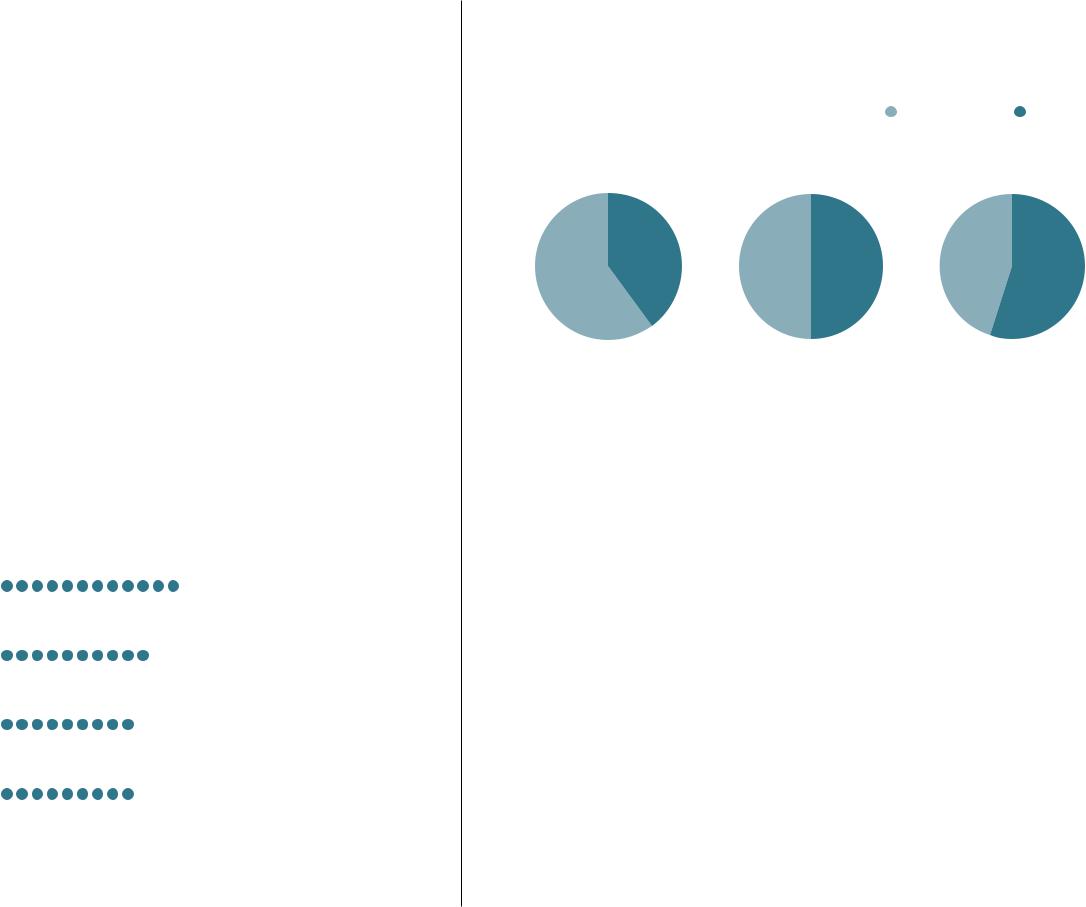
vkFORCES.com/id446425943 SHAPING
FASHION
The fashion industry is going through a seismic shift. While The State of Fashion 2018 aims to look ahead and uncover the trends shaping the fashion industry in 2018, it is also important to take stock of some of the massive long-term changes that serve as a backdrop for everything that is happening. These are overarching, interconnected forces that will drive and shape the trends in years to come.
Exhibit 1 The many challenges that have been facing the fashion industry over the past few years continue to persist
Challenges identified by respondents to BoF-McKinsey Global Fashion Survey 2018 % of executives1
TOP CHALLENGES IDENTIFIED FOR 2018
Dealing with volatility, 12 uncertainty and shifts
in the global economy
Competition |
10 |
from online and |
|
omnichannel |
|
Value chain |
9 |
improvement |
|
and digitisation |
|
Decreasing foot |
9 |
traffic and offline |
|
retailing pressure |
|
1 % of respondents to BoF-McKinsey Global Fashion Survey 2017, N = 223
Question What do you think will be the single biggest challenge for the fashion industry in 2016 / 2017 / 2018 Source BoF McKinsey Global Fashion Survey 2017
14
The State of Fashion 2018
Exhibit 2 By 2018 more than half of apparel and footwear sales will originate outside of Europe and North America
Global apparel and footwear sales forecast 2011-2025
Western markets1 |
Rest of World |
60% |
50% |
45% |
2011 |
2018 |
2025 |
40% |
50% |
55% |
1 Includes North America and Europe (Mature and Emerging)
Source McKinsey Fashion Scope
MACRO ECONOMY
Gone are the days when Western markets were the global economic stronghold. Economic growth is shifting from mature regions in the West to emerging markets in the South and East. According to McKinsey FashionScope, by 2018 more than half of apparel and footwear sales will originate outside of Europe and North America (Exhibit 2). Rapidly growing cities in emerging markets are particularly important growth centres for the fashion industry. Many incumbents with developed countries as their core markets face a stagnating sales outlook and profitability, and must seek new pockets of growth.
Furthermore, adoption of disruptive technologies like advanced robotics, mobile internet, advanced analytics, virtualand augmented reality and artificial intelligence is accelerating, with the potential to disrupt entire industries – including fashion. And with increased digital cross-border trade, it becomes harder for “local heroes” with an average value proposition to compete when anyone who is best at what they do could in theory become a global champion.
15
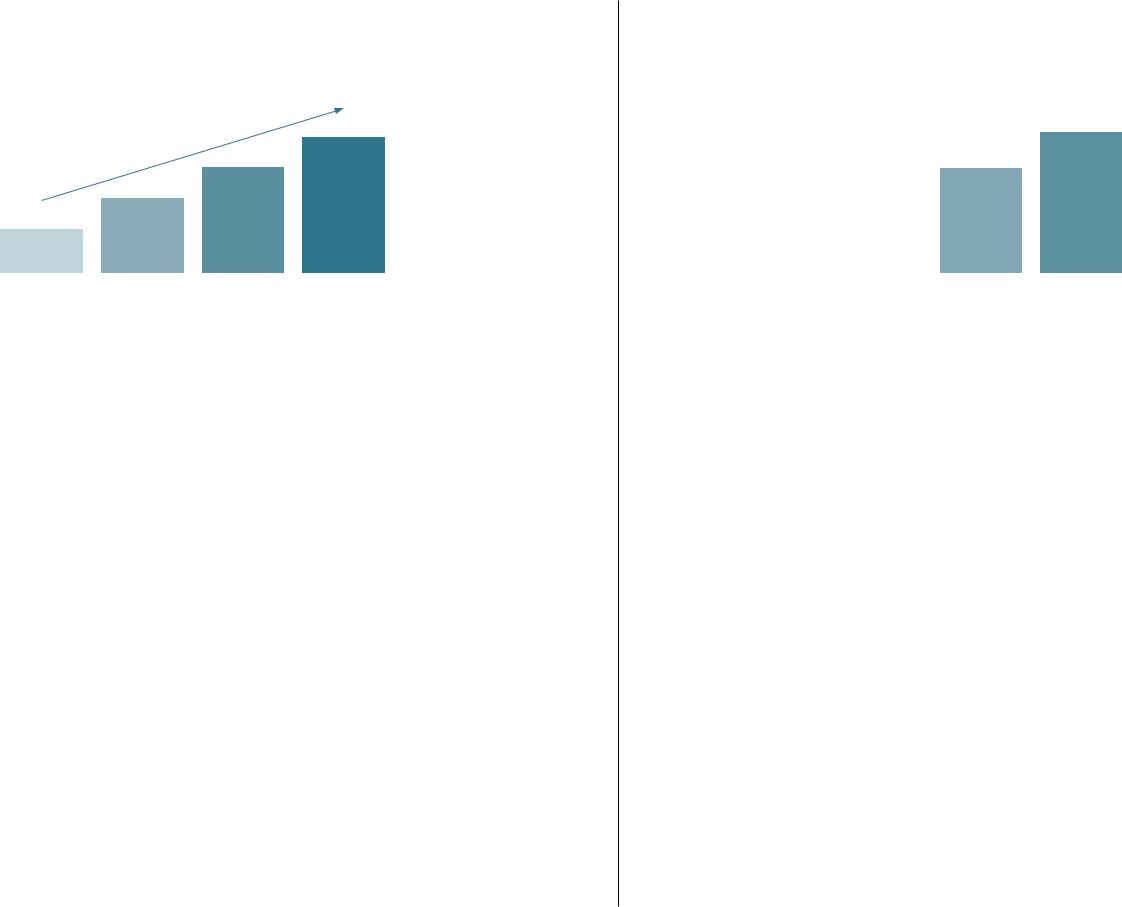
vk.com/id446425943
Exhibit 3 Mainstream fashion customers are adopting digital channels
Growth in online sales of apparel and footwear globally 2017-2020
%
|
CAGR |
|
|
|
10% |
|
|
2017 |
2018 |
2019 |
2020 |
Source Euromonitor
CONSUMER SHIFTS
The global fashion industry is moving into a decisive phase of digital adoption by the mainstream consumer, and online sales of apparel and footwear is projected to grow rapidly (Exhibit 3) not the least in emerging markets. On average, consumers in Southeast Asia spend about eight hours a day online; from social media to video streaming and shopping amongst other things.1 The modern shopper’s comfort with digital channels and content has changed the consumer purchase journey from a traditional linear model, to a complex journey across online and offline touchpoints. But regardless of touchpoint, consumers expect a consistent brand experience at all times.
Digital-first e-commerce companies from Amazon to Zappos, and Alibaba to Net-a-Porter are continuing to raise the bar – not least for fashion companies aspiring to provide an even-more-premium experience. Many consumers today expect perfect functionality and immediate support at all times. They are becoming habituated to rapid delivery times as players are constantly competing to expedite products more quickly, as we have seen through the partnership between Farfetch and Gucci, which offers delivery in selected cities from the store to a customer’s home in 90 minutes or less. Customer attention is also tuned to new communications channels. In the Philippines, Brazil and UAE, social media users report that they are now spending more than three hours per day on average on these
16
The State of Fashion 2018
Exhibit 4 New influences to consumers’ purchase decisions
Customer shopping habits
74%
Social media
55%
Online reviews
Sources Kissmetrics, Social Media Week
platforms.2 This has a profound impact on fashion, as purchase decisions are influenced by social media, peer reviews and influencer marketing (Exhibit 4).
With information and the ease of comparison at their fingertips consumers are becoming less brand loyal: among millennials, two-thirds say they are willing to switch brands for a discount of 30 percent or more. But while they are very price sensitive, they also base more of their purchasing decisions on whether a company’s practices and mission align with their values. This is a generation that has higher expectations on what a company should be able to deliver: convenience, quality, values orientation, newness — and price.
THE FASHION SYSTEM
Hand-in-hand with the online movement, many fashion companies are experiencing a steep decline in brick-and-mortar traffic. They are simultaneously looking for ways to reduce store operating costs, re-evaluate store networks and innovate the in-store experience to attract customers. The digital shift has hit some harder than others. For example, US department store sales have fallen drastically in recent years and mall closures are expected to increase. Sluggish sales in the department store channel, combined with a desire to improve margins and control brand presentation, markdowns and customer data, are causing brands to move to direct-to-consumer-models. While many
17
